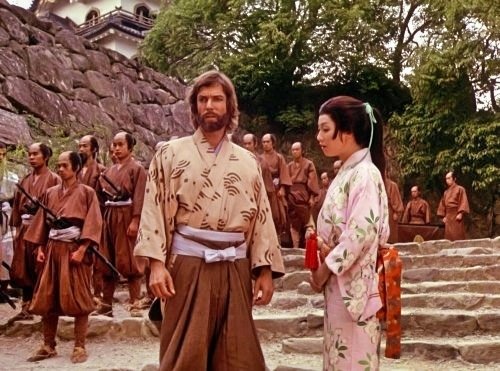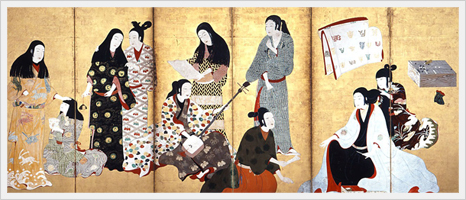"Shogun" (1980) Part 1 - Women's Costumes
Apr. 11th, 2021 11:05 am

It was the heyday of the miniseries. "Roots" had set the bar and the major TV networks were vying for novels to adapt. "Shogun" was brought to our screens in September of 1980: in a partnership between Paramount Studios, Toho Studios, Asahi TV and Jardine-Mathieson, it remains the only American TV production to be filmed entirely in Japan.
Author James Clavell says he was inspired by a single line in his daughter's history textbook, referring to an Englishman who went to Japan and became a samurai. While loosely based on the 1600 shipwreck of a Dutch vessel, the Liefde, and her pilot, William Adams, who went into the service of future shogun Tokugawa Ieyasu, Clavell always maintained he was a storyteller, not a historian.
Yeah, yeah, I know, GET ON WITH THE COSTUME CONTENT ALREADY. Fine, I'll speak to the historical bits later.
Initial work on the production, including preliminary research on costumes, sets, etc. reportedly began in spring of 1979 and filming started that June: that gives you an idea of how much time they had to produce and fit costumes.
I have not been able to find out much about Shin Nishida, the costume designer. He has no other credits listed in IMDB. The Making of James Clavell's Shogun includes a number of his drawings and shows him at his desk with an open art book before him: I was able to identify the painting shown as one of the Matsuura Screens, a work from about 1650 depicting colorfully dressed women of the pleasure quarters.

One of the Matsuura screens, Museum Yamato Bunkakan, Nara Japan. https://www.kintetsu-g-hd.co.jp/culture/yamato/english.html


You can see the influence on Kiku (Mika Kitagawa), the courtesan character. She looks a bit like the asobime at the Kyoto Costume Museum, with her racy nape-baring updo and her bright clothing. If you look closely at the detail shot, you can see they painted the silk to imitate kanoko shibori, an expensive and laborious dyeing technique.

This shot shows what she had on underneath that blingy uchikake - a simple dip dyed ombre silk kosode, with the default women's obi configuration for the entire production, a half bow tied at the back. At right, another colorful ensemble. (There will be a Geisha Rant later. I about threw the featurette DVD across the room.)

Toda Mariko (Yoko Shimada) is the most important female character: a Christian samurai of fairly high rank, pressed into service translating for her liege lord, Toranaga (Toshiro Mifune) and the outlandish English pilot, John Blackthorne (Richard Chamberlain). Shimada, a last minute casting replacement, had a huge amount of screen time and delivered a beautiful, endearing performance in two languages.
That screen time means costume changes, but Mariko's wardrobe seems to exist in a world where it is always spring and flowers bloom.






The Kyoto Costume Museum has a good representation of what a high ranking samurai woman from 1600 might look like. Mariko does - and doesn't - look this way and I have a theory about that. The kind of heavy brocade that her uchikake should be made out of was available, because it was being used on garments for Toranaga and his adversary Ishido (Nobuo Kaneko). If you look closely, you can see that the flowers on many of Mariko's uchikake and kosode have a thin white outline - the telltale sign of yuzen silk painting, a technique that is datable to the 1670s. I think Nishida made a conscious decision to use these drapier, softer looking silks as a signifier of Mariko's high rank and I base that on the fact that he also puts Lady Kiri (Miiko Taka) and Lady Ochiba (Atsuko Sano) in them. You can see it very clearly in the shot of Toranaga sneaking out of Osaka disguised as Kiri.


When we look at women of more modest rank, you can see the difference. They tend towards kosode with large, repeated motifs that look like they could be resist dyed or stencilled. Fujiko (Hiromi Senno), the young widow given to Blackthorne to be his consort, is an excellent example.




You can see the contrast between the styles worn by Kiku, Mariko and Fujiko. These three girls appear in one scene to serve sake and giggle over Anjin-san, and their look is similar to Fujiko's. Nice assortment of hair ties in these shots as well.
Every last peasant and extra gets appropriate clothing too.
This got long quickly, and what do you expect of a nine hour mini-series? I will do a separate post on the men's costumes very shortly.
UPDATE: Part 2 is available at https://gurdymonkey.dreamwidth.org/964928.html





















